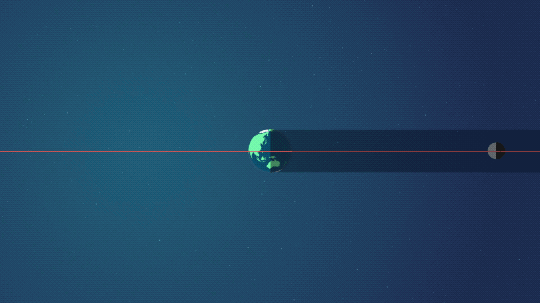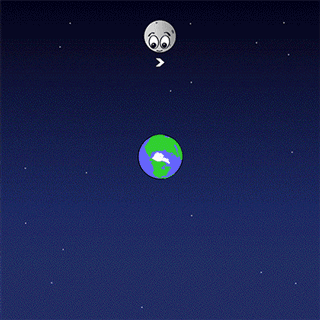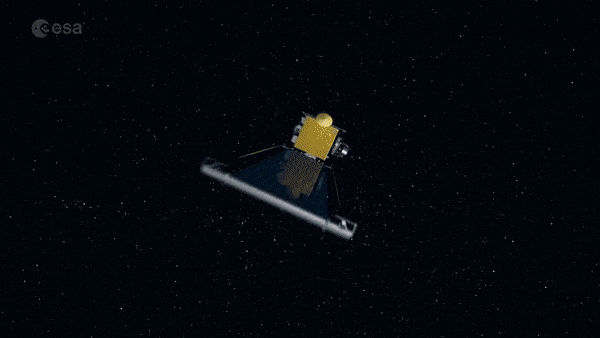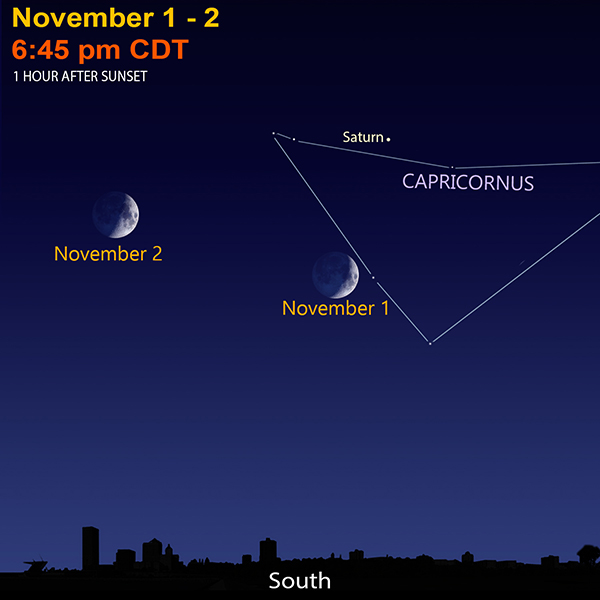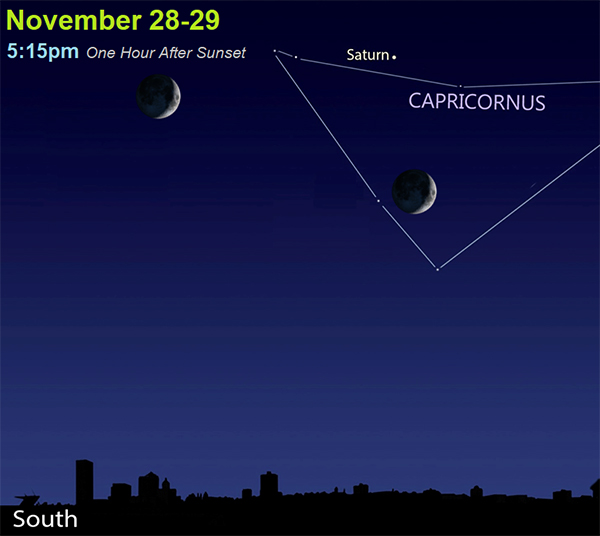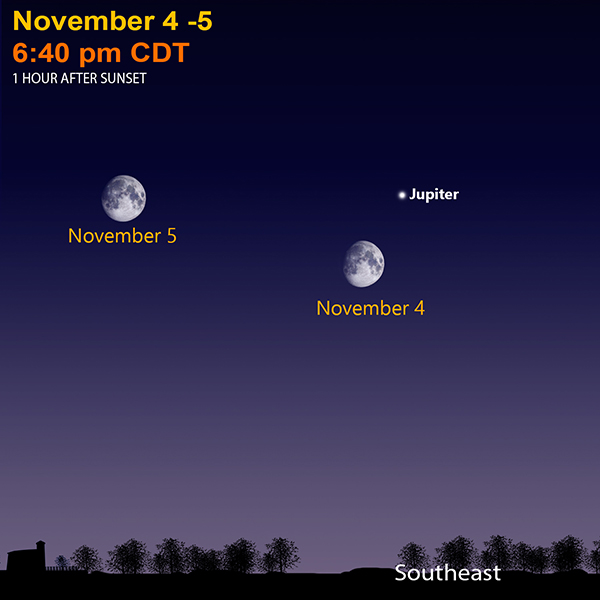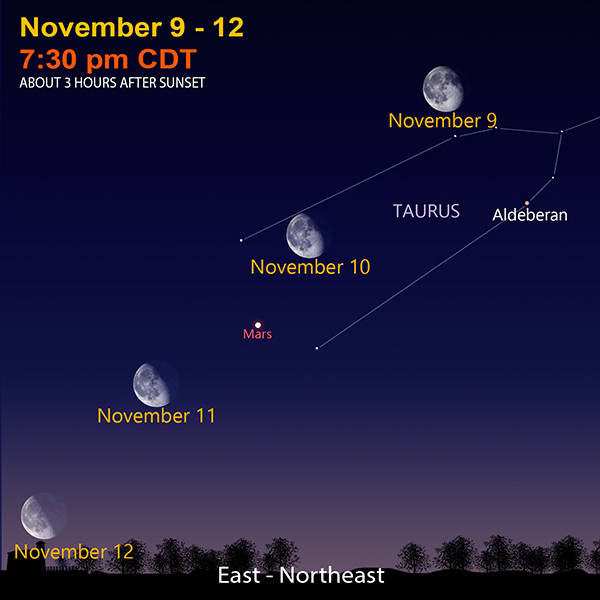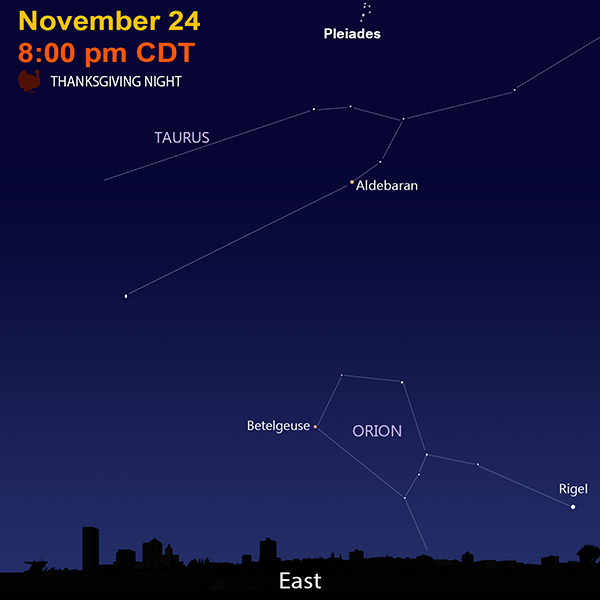Cosmic Curiosities
“Astronauts are inherently insane. And really noble.”
- Andy Weir, Author of The Martian
Eclipse on the Horizon
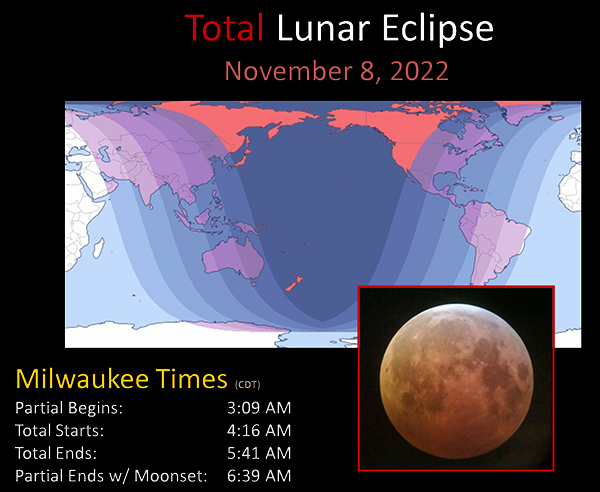
Another lunar eclipse will soon grace our skies on November 8—but you’ll need to get up early, clear skies permitting. If cloudy, go back to sleep—or you can watch it live at the Lowell Observatory in Arizona, the place where Pluto was discovered 92 years ago. The next total lunar eclipse over Milwaukee will not be until March 13-14, 2025.
When is the best time to watch the eclipse?
It starts a little after 3:09 a.m.; that’s a bit early. The best time to see this “blood moon” is around 5:00 a.m. CST. Sure, that’s still early, but it’s a gorgeous sight! This is the midpoint of the total lunar eclipse. The moon will be in the deepest part of the Earth’s shadow and will shine its darkest red hue. This reddish moon changes a little bit with every eclipse. The moon will be high enough (17° altitude) to see in the WNW sky, but low enough where our thickening atmosphere may give it a richer color.
By 6:00 a.m. CST, the moon will have descended to only 6° above the WNW horizon. It will be difficult to see if you have buildings or trees blocking your view. Plus, it will be getting bright as the sun nears the ESE horizon.
Why does the moon turn red?
First, logic might tell you the eclipsed moon should not be visible at all. The moon is caught in the Earth’s dark umbra shadow. Our nights are caused by the same shadow. If you’re stargazing far from city lights on a moonless night, it’s really dark! And it’s very hard to see anything except the stars above.
Though the moon is in the Earth’s shadow, it catches a crimson glow from the sun. How? As sunlight moves through our atmosphere, it gets scattered into the colorful spectrum. Our air molecules scatter the sun’s blue light best at short distances—that is why the sky is blue on a clear day. When sunlight goes through longer, more dense air, like at sunrise and sunset, red light doesn’t get scattered away like the blue light. The red light keeps going, all the way to the moon—almost a quarter of a million miles away.
So why don’t we have a lunar eclipse every month?
The moon’s orbit is tipped by five degrees compared to the Earth’s orbit. So the full moon is either above or below the Earth’s shadow cone and there’s no eclipse.
Why do we always see the same side of the moon?
Though this question doesn’t have anything to do with eclipses, we threw it in because it’s a question we get all the time!
The answer is the moon’s orbit time and its rotation time are the same. It’s true: The Moon spins.
The orbit time is 27.3 days. The rotation time is 27.3 days. So as the moon rotates, it always keeps the same face toward us Earthlings. The science word for this is synchronous rotation. Hopefully, the graphic file can illustrate that the moon spins, too—not just orbits.
Future Space
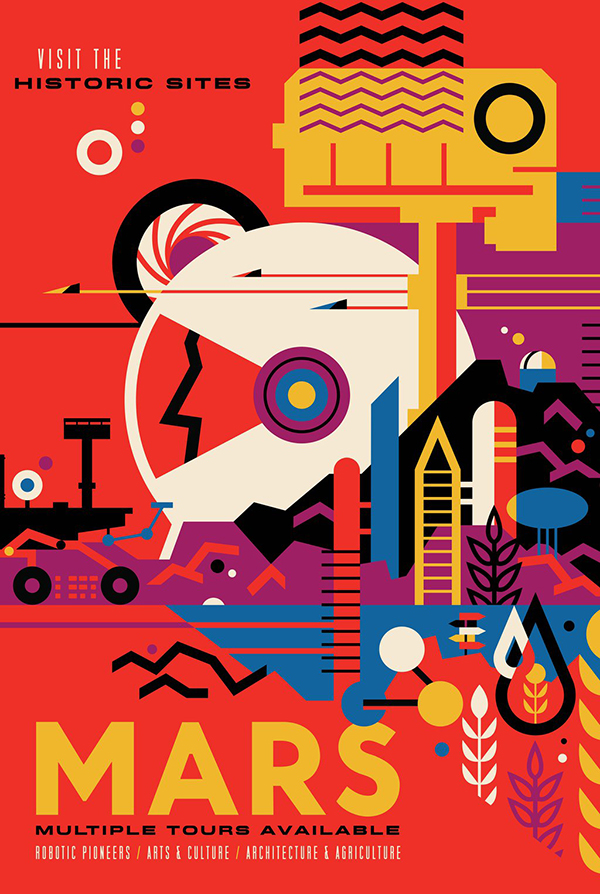
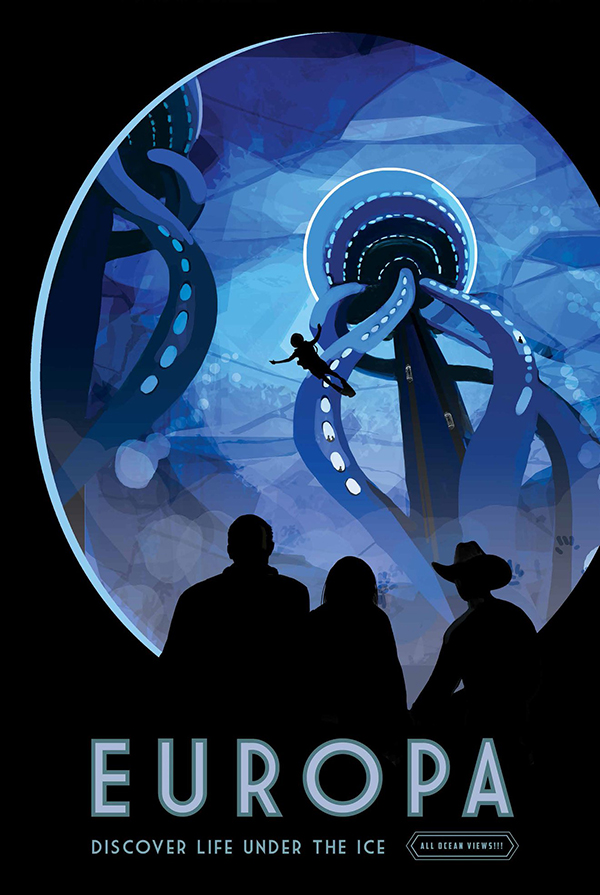
I have no cosmic crystal ball, but like many of us, I often gaze toward the future and wonder what will be. NASA got real artistic with their space tourism posters above.
Sky events in years to come, like eclipses, are pretty much a certainty. I suppose some rogue rock from the outer solar system could smack into the moon—or us—and change our orbits slightly. This could disrupt our exact eclipse predictions. But that scenario seems improbable.
Today, though, I want to share my predictions on space and future space explorations. Some are in the works now; some are dreams. Below is my cosmic look ahead for the next 100 years, all the way to 2122. They are my “educated” guesses; I’m sure that 100 different people would have 100 different ideas on the space path going forward—and that variety is a good thing.
(Just a note on space travel: A generally accepted border where space begins is 100 kilometers above us. It’s called the Kármán line, the invisible boundary between Earth’s atmosphere and space.)
2026: Astronauts walk on the moon—the first time since 1972
2029: Rocks from Mars are brought back to Earth
2035: Space tourists orbit the moon
2037: A moon base is established for science research and transport
2042: Cost for a suborbital space flight is under $100,000 USD (today’s dollars). Currently the lowest price is $450,000 and the wait list is long. Today, a balloon ride that takes you up about 18-19 miles costs $50,000.
2044: An international team of astronauts walk on Mars

Space Hotel Vision by Orbital Assembly Corporation
2047: The first space hotel opens for tourists
2049: A widely accepted agreement is reached by the science community that microbial life existed on Mars billions of years ago
2058: An oxygen-rich atmosphere is confirmed on a distant exoplanet
2066: The first space tourists walk on the moon
2073: A mission to Jupiter’s moon Europa drills through the thick ice to explore its watery interior; no evidence for life is detected
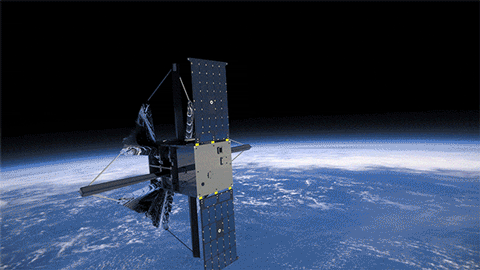
Space Hotel Vision by Orbital Assembly Corporation
2098: A solar sail mission sets off to the Alpha Centauri triple star system where exoplanets are known to exist—it will take 50 years to reach this system traveling at 10% the speed of light
2103: The number of people to reach space surpasses one million.
2122: The first tourists arrive on Mars.
Planet Defense
Asteroids. Comets. They are threats to Earth, to life. A colossal impact killed the dinosaurs—and 75% of all life—66 million years ago. Only nine years ago, the Chelyabinsk meteor, a rock 70 feet across, exploded 18 miles high in the atmosphere. The resulting shockwave caused windows to implode all over the city of Chelyabinsk, injuring more than 1,000 people.
Currently, there are no Near-Earth Objects (NEOs) that would cause a threat to the Earth. But what if, say in 10 or 20 years, a newly discovered danger is on course for a head-on collision with Earth? Luckily, NASA is on the case with one of its newest endeavors, DART.
The small spacecraft DART stands for Double Asteroid Redirection Test. It is part of NASA’s Planetary Defense Coordination Office. DART is the first mission ever dedicated to seeing if we’d be able to change an asteroid’s path by kinetic impact. Or, in simpler terms, can we nudge an asteroid out of the way?
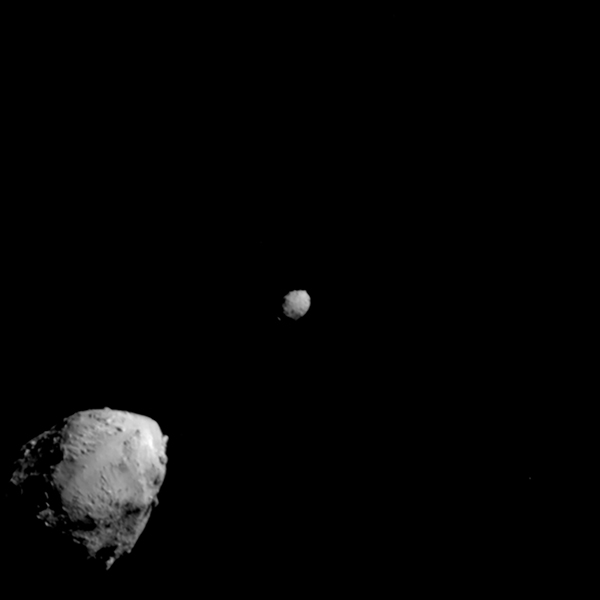
Last image of both Didymos and Dimorphos taken by DRACO imager before impact. Credit: NASA/Johns Hopkins APL
We can. On September 26, 2022, DART crashed into the “moon” asteroid Dimorphos. Two weeks later, after analyzing the available data, NASA was able to confirm that DART altered Dimorphos’s orbit! Dimorphos now orbits around its bigger companion asteroid Didymos every 11 hours and 23 minutes. This altered its path so its new orbit is 10 hours and 51 minutes—a difference of 32 minutes. The impact produced about 11 gigajoules of energy, which is roughly the equivalent of three tons of TNT!
Our planetary defense is now operational.
Space in Sixty Seconds
Explore the planets and stars of November’s night sky and the upcoming lunar eclipse.
Sky Sights
Saturn shines with the dim stars of Capricornus all month. Our Moon passes nearby on November 1-2 and again later in the month on November 28-29.
Jupiter and the Moon shine near each other on November 4-5. At the start of November, Jupiter sets at 4:03 a.m. CST and 1:05 a.m. at month’s end.
Mars and the Moon shine together a little later in the evening. The red planet rises at 8:08 p.m. on November 1 and by 4:39 p.m. on November 30. Mars is at opposition next month on December 7.
Mercury and Venus are too close to the sun to be seen this month.
Orion finally returns to the early evening sky. That is, if your bedtime is not before 8:00 p.m. CST. On Thanksgiving night, step out and give thanks to our winter friend and the night sky’s most-prominent constellation. By the end of 2022, Orion will be easy to see by 5:30 p.m. in the eastern sky.
November Star Map
Sign Up
Receive this newsletter via email!
Subscribe
See the Universe through a telescope
Join one of the Milwaukee-area astronomy clubs and spot craters on the Moon, the rings of Saturn, the moons of Jupiter, and much more.
Follow Bob on social media
Twitter: @MPMPlanetarium
Facebook: Daniel M. Soref Planetarium


